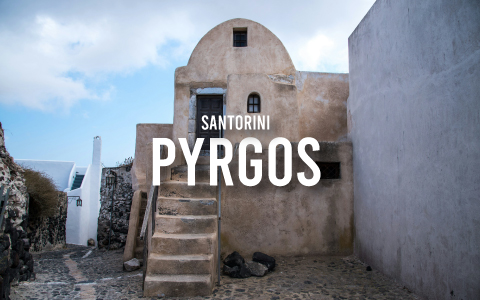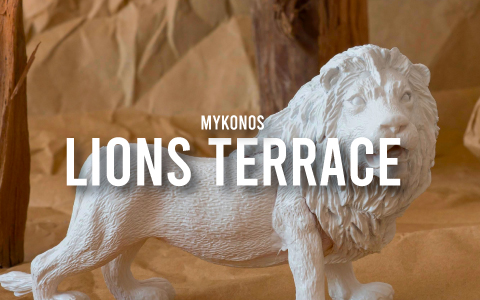
The Timeless Beauty of Pyrgos Kallistis, Santorini
Situated in the southern Aegean Sea, Santorini is renowned for its caldera, formed by a massive volcanic eruption thousands of years ago, the pristine beaches, such as the famous Red Beach, and the cliffside villages. While most visitors flock to the bustling streets of Fira or the iconic, postcard-perfect villages of Oia or Imerovigli, a hidden treasure awaits in the heart of the island: Pyrgos Kallistis.
A Glimpse into the History of Pyrgos Kallistis
Pyrgos Kallistis, often simply referred to as Pyrgos, was once the capital of Santorini, serving as the island’s administrative center before Fira took on that role in the early 19th century. The village dates back to the 15th century and was founded during the time when the Venetians ruled the island. Like many of Santorini’s villages, it was strategically built on a hill to protect its inhabitants from pirate invasions, which were common in the Aegean region during the Middle Ages.
The original village’s maze-like design, with narrow paths and hidden corners, is still charming. Over the centuries, Pyrgos has maintained its authentic character, with many of its buildings and churches dating back hundreds of years. That is why today Pyrgos offers a window into the island’s past, blending ancient architecture with the peaceful atmosphere of a traditional Greek village.
Exploring the Main Attractions of Pyrgos
Though Pyrgos may be smaller and quieter than its more famous counterparts, it is full of charm and historical significance. Here are the main attractions that make Pyrgos worth exploring:
Kasteli (The Venetian Castle)
At the center of Pyrgos stands the imposing ruins of its medieval castle, Kasteli. This fortress, built during Venetian rule, was once one of the island’s key defenses. As you wander through its remnants, you’ll find yourself transported back to Santorini’s turbulent history, where battles against foreign invaders were fought. The castle is surrounded by a network of narrow alleys and traditional homes, offering stunning views of the island below. At the top of the castle hill, you can enjoy panoramic vistas stretching from the caldera to the Aegean Sea. This elevated vantage point is perfect for photographers and sunset enthusiasts.
Church of Theotokaki
One of Pyrgos’s hidden gems is the Church of Theotokaki, one of the oldest churches on the island. This small, humble structure dates back to the 10th century and is located within the Kasteli walls. Inside, you can admire beautiful Byzantine frescoes and icons that have been carefully preserved over the centuries. The church’s architectural style is simple but deeply atmospheric, offering a glimpse into the island’s religious and cultural heritage.
Monastery of Profitis Ilias
A short drive or hike from Pyrgos leads to the Monastery of Profitis Ilias, perched atop the highest peak on Santorini. This 18th-century monastery is not only a place of spiritual significance but also a breathtaking viewpoint, offering a 360-degree panorama of the entire island. The monastery houses a small museum that displays religious artifacts, manuscripts, and books from centuries past, offering insight into the island’s Orthodox Christian traditions. The surrounding landscape is peaceful and serene, making it a perfect spot for contemplation and relaxation.
Art galleries and local craft shops
Pyrgos has become a small cultural hub, attracting artists and craftsmen who have set up galleries and shops throughout the village. These spaces showcase contemporary Greek art, ceramics, and jewelry, offering visitors a chance to take home a piece of Santorini’s creativity. The village is less commercialized than Fira or Oia, making it a fantastic place to find unique, handmade souvenirs while supporting local artisans.
Traditional wine tasting at Santo Wines
Santorini is famous for its unique wines, thanks to the island’s volcanic soil and dry climate. Just outside Pyrgos, the renowned Santo Wines winery offers a chance to sample local varieties such as Assyrtiko, Vinsanto, and Nykteri. Visitors can tour the vineyards, learn about the island’s ancient winemaking traditions, and enjoy a wine-tasting session while taking in panoramic views of the caldera. It’s an ideal way to relax and savor the flavors of Santorini after a day of exploring Pyrgos.
The beaches of Pyrgos
No trip to Santorini is complete without experiencing its unique beaches, and two of the island’s most famous stretches of coastline—Perissa and Kamari—are located just a short drive from Pyrgos. These neighboring beaches are renowned for their distinctive black volcanic sand, which creates a striking contrast against the crystal-clear waters of the Aegean.
Perissa Beach is known for its relaxed, laid-back vibe, while Kamari Beach has a livelier atmosphere with a long promenade lined with shops, restaurants, and cafés. Both beaches are overlooked by the imposing Mesa Vouno, a large rock formation that rises dramatically between them, creating a breathtaking backdrop.
Easter celebrations
If you happen to visit Pyrgos during Easter, you’re in for a unique experience. The village is known for its deeply spiritual and traditional Easter celebrations, which culminate on Good Friday with a candlelit procession through the village. Thousands of candles are placed along the village streets and on the castle walls, creating a magical, glowing atmosphere that is both solemn and enchanting. It’s a powerful expression of Greek Orthodox tradition and one of the most visually stunning celebrations in Santorini.
Getting to Pyrgos
Pyrgos is centrally located on Santorini, making it easily accessible from other parts of the island.
Renting a car or scooter is one of the best ways to explore the island and reach Pygros, as it gives you the freedom to travel at your own pace. From Fira, the capital of the island, Pyrgos is just a 10-minute drive away (approximately 5 kilometers). The drive from Oia, the northernmost village, takes about 30 minutes. The roads are well-maintained, and parking in Pyrgos is available near the entrance of the village, although spaces can be limited during peak times.
For the more adventurous traveler, walking to Pyrgos from nearby villages is a scenic and enjoyable option. A hike from Fira to Pyrgos takes approximately 45 minutes to an hour, and the path offers beautiful views of the countryside and the sea. The island’s pleasant weather makes walking a viable option for much of the year, especially in the cooler months of spring and autumn.



